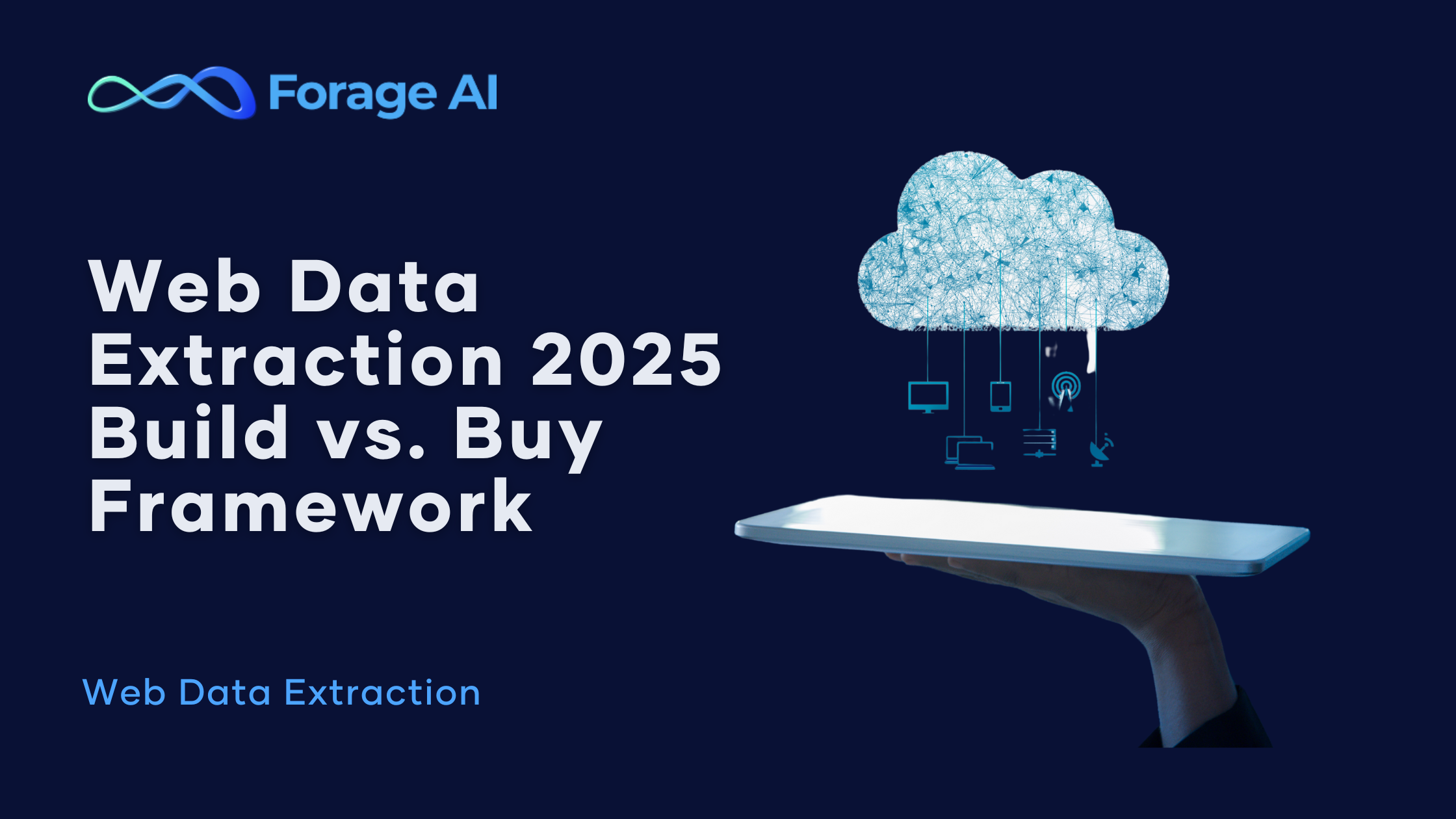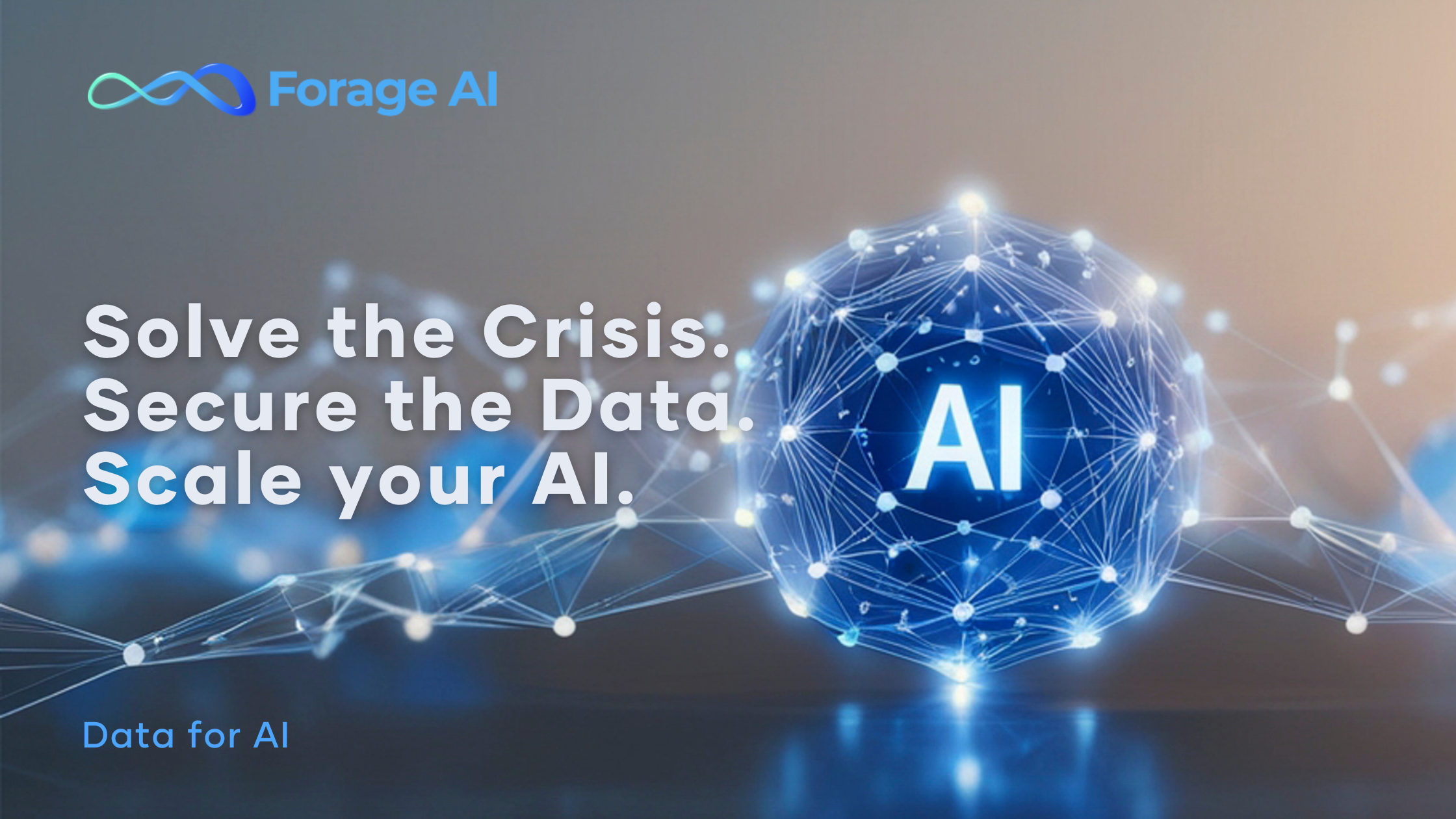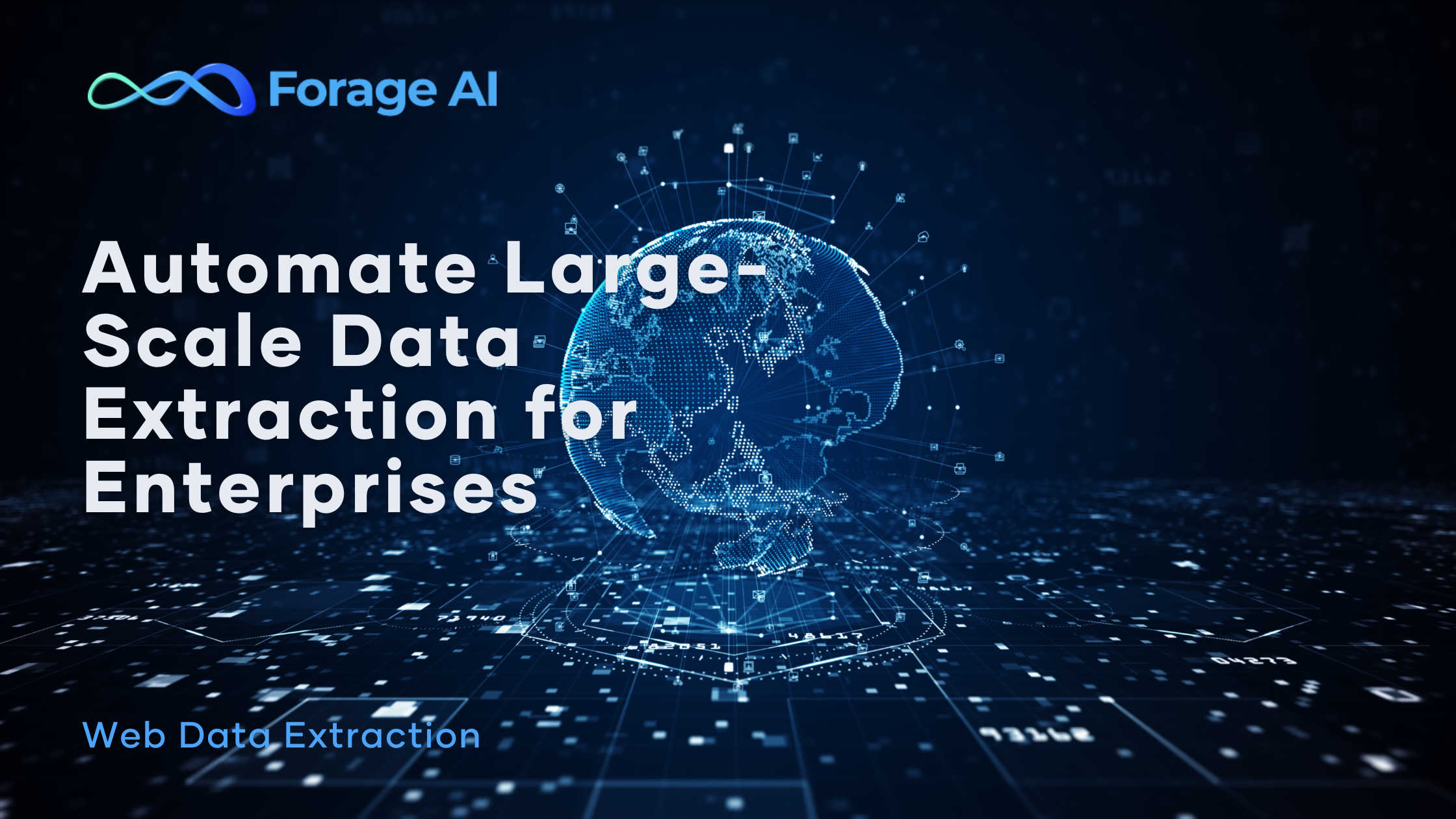Is your business flying blind while data-savvy competitors zoom ahead? MIT research shows companies with real-time data capabilities achieve 62% higher revenue and 97% better profit margins.
So what’s stopping companies from achieving such success?
The challenge is not only finding the right information that can give you beneficial insights, but also extracting/ accessing it efficiently. In this guide, we’ll explore five data extraction approaches, ranging from DIY manual methods to enterprise-grade cloud solutions, that you can use to access insightful data. We’ll also provide you with a practical framework to help you evaluate which option best matches your business needs, technical resources, and budget constraints. By the end of this blog, you’ll be equipped to make an informed data acquisition strategy for your business.
Think of web data extraction like mining for digital gold. There are multiple ways to get to your gold. You can plan to do it all yourself, rent equipment to make the job easier, or partner with experienced miners who know exactly where to look. Now let’s examine each of these “data mining methods” in detail, so you can understand exactly what each approach offers and when it makes the most sense for your specific situation.
Web Data Extraction Approaches and Service Categories
1. Manual Web Data Extraction
What is it? Manual extraction is increasingly viewed as yesterday’s solution, but it still has relevant use cases. This hands-on method involves human operators directly collecting data from websites using browser tools or simple copy-paste techniques.
When does manual data extraction make sense?
- One-time, small-scale data collection needs.
- Highly unstructured data that requires human judgment.
- Verifying automated extraction results.
- Handling CAPTCHA-protected websites.
Technical toolkit for manual data extraction:
- Browser Developer Tools (Chrome DevTools, Firefox Inspector) for inspecting HTML elements like –
- Product listings in <div class=”product”> elements.
- Pricing data in <span class=”price”> tags.
- Article content within <div class=”content”> containers.
- Tabular data in <table> elements and their <tr> and <td> children.
- Navigation links in <a> tags with specific attributes.
- XPath queries for locating specific elements.
- Regex for pattern matching.
- Simple browser extensions, such as Open Multiple URLs, automate repetitive tasks for data researchers.
Why it’s becoming obsolete: Manual extraction simply can’t scale with today’s data needs. With the data extraction market expected to surpass $5 billion before the end of the decade, the shift away from manual processes is accelerating rapidly.
You’ve seen how manual extraction works for basic needs—but what about when your requirements grow beyond what’s practical for human operators? Let’s explore how automated extraction systems can scale to handle thousands or even millions of data points with minimal oversight.
2. Automated Web Data Extraction: The Scalable Workhorse
What is it? Automated extraction uses software to collect data from websites without human intervention. Think of it as an army of tireless digital workers that can visit thousands of web pages around the clock, gathering exactly the information you specify.
When to choose automated data extraction:
- Recurring data collection needs.
- Requirements for large volumes of data (thousands of pages).
- Frequent updates needed (daily or weekly).
- Structured data from multiple similar sources.
Advantages of automated web data extraction:
- Scales to handle millions of data points.
- Significantly reduces labor costs and time.
- Eliminates human error; provides high accuracy.
- Adjusts to changing website layouts.
Technical implementation: Automated extraction relies on a sophisticated stack of technologies:
a) HTML Parsing: Tools that help navigate and interpret web page structure.
- BeautifulSoup (Python): A user-friendly library that makes it easy to scrape information from web pages by navigating the HTML structure.
- LXML: A high-performance library combining speed with powerful XML processing capabilities.
b) HTTP Clients: Libraries that handle communication with web servers.
- Requests: A straightforward Python library for making HTTP requests, handling cookies, and managing sessions.
- HTTPX: A modern alternative to Requests with both synchronous and asynchronous capabilities.
- aiohttp: Specializes in high-performance asynchronous HTTP requests for applications requiring maximum throughput.
c) Headless Browsers: Software that simulates full browser environments without a visual interface.
- Selenium WebDriver: Controls actual browser instances, supporting many browsers and programming languages.
- Playwright: A newer framework offering powerful capabilities across Chromium, Firefox, and WebKit.
d) Data Processing: Libraries for cleaning, transforming, and storing extracted data.
- Pandas: The industry standard for data manipulation in Python.
- Polars: A faster alternative to Pandas for large datasets using parallel processing.
- SQLAlchemy: Connects your extraction pipeline to databases for persistent storage.
- DuckDB: An in-process analytical database for high-performance querying of extracted data.
Web scraping services:
- Scraping software providers: Companies that develop and sell automated scraping tools for in-house use.
- Pros: One-time cost, full control over implementation.
- Cons: Requires technical expertise to use and maintain.
- Custom scraping solution developers: Service providers that build and maintain tailored extraction scripts.
- Pros: Tailored to specific business needs. May need upgrades from time to time.
- Cons: Higher development costs and ongoing maintenance fees.
- Extraction-as-a-Service platforms: Subscription-based services offering ready-to-use extraction capabilities without coding.
- Pros: No coding required, quick implementation.
- Cons: Monthly subscription costs, potential limitations on customization.
- Developer libraries and frameworks: Companies selling specialized tools for building in-house scraping solutions.
- Pros: Flexibility to customize, integration with existing systems.
- Cons: Requires development resources, maintenance responsibility.
At Forage AI, we’ve built custom extraction engines that utilize advanced AI to handle even the most challenging websites. Our business data extraction service can process millions of company websites to gather firmographic information, product and service offerings, news, social and contact data with remarkable accuracy. We handle the entire technology stack, from proxy management to data validation, allowing clients to focus on utilizing the data rather than extracting it.
While automated extraction offers tremendous scalability, some situations call for an even more direct and reliable approach. Let’s take a look at how API-based extraction can provide a stable, sanctioned channel for accessing data from websites that offer this capability.
3. API-Based Web Data Extraction: The Direct Pipeline
What is it? API-based extraction is like having a VIP pass to the data—it leverages structured interfaces provided by websites themselves to access information in a standardized, sanctioned format. Unlike automated extraction that accesses websites through their user interfaces, API-based extraction uses officially provided data endpoints, making it more stable and less likely to break when websites change.
When to choose API-based extraction:
- When the target website offers an official API.
- For real-time data that needs frequent updating.
- When data accuracy and reliability are paramount.
- For applications requiring direct integration with data sources.
Key advantages:
- Official data channel: Access information directly from the source with permission.
- Reliability: Immune to website layout changes that break scrapers.
- Structured format: Receive consistent, well-organized data requiring minimal processing.
- Legitimacy: Avoids potential legal questions around automated data collection.
Technical implementation: API-based extraction involves working with several standardized components:
- API Types: RESTful APIs use standard HTTP methods (GET, POST, etc.) to access resources at specific URLs, while GraphQL allows requesting exactly the data fields you need in a single query.
- Data Formats: Most APIs return data in JSON format (lightweight and readable), though some use XML (more structured) or newer formats like Protocol Buffers (compact and efficient).
- Authentication: APIs typically require authentication through API keys (simple tokens), OAuth (secure delegated access), or JWT (JSON Web Tokens for maintaining session state).
- Advanced Features: Many modern APIs offer webhooks for real-time notifications and streaming capabilities for continuous data flows.
Types of services in this category:
- API providers: Companies that offer subscription access to proprietary data through their APIs (e.g., Bloomberg API, Twitter/ X API).
- API integration platforms: Services that simplify connecting to and working with multiple third-party APIs (e.g., MuleSoft, Zapier).
- API management services: Platforms that help monitor, secure, and optimize API usage (e.g., Apigee, Kong).
- Data marketplace APIs: Aggregators that offer unified access to multiple data sources through a single API (e.g., Snowflake Data Marketplace).
To support clients who need regularly updated business intelligence, Forage AI also provides API access to firmographic data covering millions of companies. Users can request specific data types and receive structured information ready for integration, with licensing that allows team-wide access and product embedding without additional fees.
We’ve explored more technical approaches so far, but what about solutions for team members who don’t have coding experience? Here’s how browser extensions can democratize data collection across your organization.
4. Browser Web Data Extensions: The User-Friendly Option
What is it? Browser extensions for data extraction are like smart fishing poles for the web—they operate directly within your browser, capturing data as you browse or through targeted actions. This approach bridges the gap between manual and fully automated methods, combining human judgment with technological assistance.
When to choose browser extensions:
- Useful for non-technical users who need occasional data extraction.
- Workflows where human verification is important.
- Selective data gathering from browsed pages.
- Training datasets for machine learning applications.
Key advantages:
- Accessibility: Usable by anyone without coding knowledge.
- Visual feedback: See the data as it’s being collected.
- Integration with browsing: Extract data while performing normal web activities.
- Targeted collection: Focus on specific information during active browsing sessions.
Technical implementation: Browser extension extraction involves several key technical components:
a) Extension Architecture:
- Manifest file: Defines permissions, background scripts, and content scripts required by the extension.
- Background scripts: Long-running scripts that manage browser events and extension state.
- Content scripts: Scripts injected into web pages to read and manipulate the DOM.
- Popup pages: User interface elements for extension interaction.
b) APIs and Technologies:
- Chrome Extension API: Provides access to browser functionalities like tabs, storage, and network requests.
- Web Extensions API: Cross-browser extension development framework, enabling compatibility across Chrome, Firefox, and Edge.
Types of services in this category:
- Browser extension developers: Companies creating and maintaining extraction extensions for popular browsers (e.g., Data Miner, Web Scraper, Instant Data Scraper).
- Extension marketplaces: Platforms offering collections of ready-to-use data extraction extensions (e.g., Chrome Web Store, Firefox Add-ons, Edge Add-ons).
- Custom extension development services: Agencies building tailored browser extensions for specific business needs (e.g., Appinventiv, Fingent, Mindk).
- Browser automation platforms: Services that combine browser extensions with server-side processing for enhanced capabilities (e.g., Puppeteer, Selenium IDE, Katalon Recorder).
Forage AI’s automated website monitoring service provides capabilities similar to browser extensions, automatically detecting when important content changes on key websites.
Now that we’ve covered options for individual users and teams, let’s explore enterprise-grade solutions that can handle massive data requirements with reliability and scalability that smaller-scale approaches can’t match.
5. Custom Data Extraction Services: The Enterprise Solution
What is it? Custom data extraction services are like having your own dedicated data intelligence team—experts who understand your specific needs and build tailored solutions from the ground up. This comprehensive approach provides end-to-end solutions designed specifically for your business requirements, handling everything from strategy and extraction to processing and delivery.
When to choose custom data extraction:
- Complex, unique data requirements that off-the-shelf tools can’t handle.
- Enterprise-scale needs requiring specialized expertise and infrastructure.
- Limited internal technical resources for building and maintaining extraction systems.
- Business-critical data that demands guaranteed accuracy and reliability.
Key advantages of custom data extraction:
- Tailored to your needs: Built specifically for your data requirements and business goals.
- Expert management: Specialists handle the technical complexity while you focus on using the data.
- Scalable infrastructure: Designed to grow with your business without performance degradation.
- Seamless integration: Custom-built connections to your existing systems and workflows.
Technical implementation: Custom extraction services combine multiple advanced technologies:
- Distributed Infrastructure: Scalable computing resources from cloud platforms (AWS, Google Cloud, Azure) and containerization technologies (Docker, Kubernetes) manage workloads efficiently across multiple servers.
- Intelligent Processing: Advanced task distribution systems (Celery, RabbitMQ) and specialized databases (Cassandra, DynamoDB) handle large volumes of extracted data with optimal performance.
- Real-time Pipelines: Stream processing capabilities (Apache Kafka) handle live data flows while batch processing systems (Apache Spark) transform large datasets efficiently.
- AI Enhancement: Machine learning models provide natural language processing (NLP) for text analysis and computer vision for extracting data from images and documents.
However, you don’t really need to worry about these when working with experienced data experts. Companies like Forage AI handle all the data infrastructure, so you can focus on consuming the data.
Forage AI’s web data extraction services exemplify this custom data extraction approach. We’ve built a platform that handles millions of web pages daily, extracting exactly the data you need with high accuracy. Whether you’re monitoring e-commerce prices, tracking business intelligence, or building training datasets for AI, our scalable infrastructure adapts to your requirements without requiring your team to manage complex technical details.
Now that you’ve explored all five extraction approaches—from manual methods to enterprise cloud solutions—you need a framework to decide which one fits your specific needs. Let’s look at how you can systematically evaluate these options against your business requirements, technical resources, and budget constraints.
How to Choose the Right Web Data Extraction Approach and Service Provider
Selecting the optimal web data extraction approach is like choosing the right vehicle for a journey—the best choice depends on your destination, cargo, and driving skills. Consider these key factors:
- What’s your data volume and frequency? Start by defining exactly what data you need, how often you need it, and in what volume. If you’re tracking thousands of products across hundreds of e-commerce sites daily, you’ll need a different solution than if you’re gathering industry news weekly.
- What technical resources do you have? Assess your team’s capabilities. Do you have developers who can build and maintain extraction systems? If not, a managed service might be more appropriate.
- How will the extracted data integrate with your systems? Consider how the extracted data will flow into your existing systems. The right solution should fit seamlessly into your data pipeline.
- What compliance requirements apply to your data? Make sure your extraction approach complies with legal requirements like GDPR and CCPA. This is particularly important if you’re gathering data containing personal information. With regulatory fines reaching up to 4% of annual revenue for some companies, compliance cannot be an afterthought.
- What’s your budget and ROI timeline? Balance your investment against expected ROI. While cloud-based services might have higher upfront costs, they often deliver better long-term value through reduced maintenance and higher reliability.
Remember, the technology is just a means to an end. Your ultimate focus should be on the business value of the data itself, not the complexity of how you get it.
Focus on Data Value, Not Extraction Complexity
The tech behind web data extraction keeps advancing, but don’t lose sight of what truly matters—the business value that good data delivers. The right build-or-buy decision isn’t about having the fanciest technology; it’s about getting actionable insights without getting bogged down in technical complexities.
Your strategy should prioritize solutions that deliver clean, reliable data that fits smoothly into your existing systems. For some companies, that means building in-house capabilities for unique requirements. For others, it’s teaming up with experienced providers like Forage AI, which can help you get up and running quickly.
If you still need help getting started with your data extraction, feel free to reach out to us, we’ll be happy to help.





